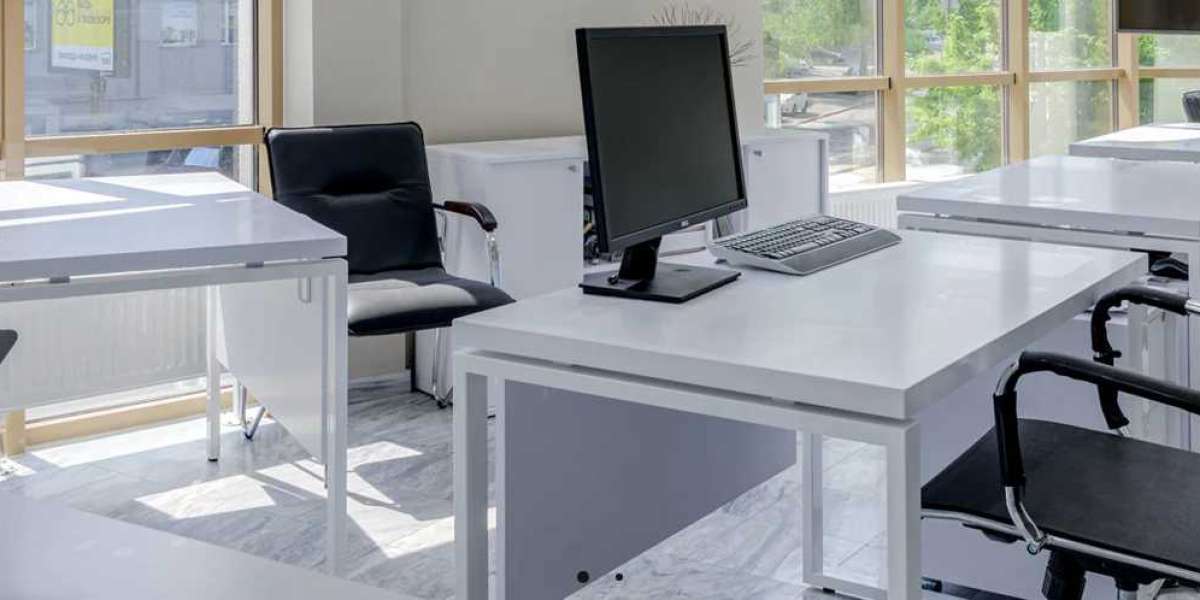Creating an office layout that maximizes collaboration involves selecting the right furniture and arranging it to foster interaction and teamwork. Here’s how to design an office layout to enhance the cooperation:
1. Open Floor Plans
- Flexible Spaces: Use open floor plans to create flexible spaces where teams can easily move around and interact. Avoid rigid layouts that separate employees into isolated areas.
- Collaborative Zones: Designate specific areas for collaborative work, such as open meeting spaces, lounge areas, and brainstorming zones.
2. Modular and Adaptable Furniture
- Adjustable Configurations: Choose modular furniture that can be reconfigured as needed. Modular tables, movable chairs, and adjustable partitions allow you to create dynamic spaces for different types of collaboration.
- Multi-Use Furniture: Incorporate furniture that serves multiple functions, such as desks that can be rearranged into collaborative setups or storage units that double as seating.
3. Collaborative Meeting Areas
- Round Tables: Opt for round tables or circular meeting areas to promote equal participation and open dialogue during meetings.
- Mobile Furniture: Use mobile tables and chairs that can be easily rearranged to accommodate different group sizes and meeting formats.
4. Casual Meeting Spaces
- Lounge Areas: Create casual meeting spaces with comfortable seating like sofas, armchairs, and coffee tables. These areas encourage informal discussions and creative brainstorming.
- Huddle Rooms: Design small, adaptable huddle rooms equipped with technology for quick, impromptu meetings and collaboration.
5. Interactive Whiteboards and Technology
- Whiteboards and Glass Boards: Install interactive whiteboards or glass boards in collaborative areas for brainstorming and visualizing ideas.
- Integrated Technology: Equip meeting rooms and collaborative spaces with technology such as video conferencing systems, smart boards, and wireless presentation tools.
6. Acoustics and Privacy
- Acoustic Panels: Use acoustic panels and sound-absorbing materials to minimize noise and create a more focused environment in collaborative spaces.
- Privacy Solutions: Incorporate flexible partitions or privacy screens to provide a balance between openness and privacy, allowing for focused work when needed.
7. Ergonomic and Comfortable Furniture
- Comfortable Seating: Provide ergonomic seating options in collaborative areas to ensure comfort during extended meetings or discussions.
- Adjustable Furniture: Use adjustable desks and tables that can be modified to suit different working styles and preferences.
8. Space for Social Interaction
- Break Areas: Include informal spaces such as kitchens or coffee bars where employees can gather, relax, and engage in casual conversations.
- Recreational Zones: Add recreational elements like game areas or relaxation lounges to encourage team bonding and a positive work atmosphere.
9. Clear Pathways and Accessibility
- Open Flow: Ensure clear pathways and easy access between collaborative areas to facilitate smooth movement and interaction among team members.
- Accessible Design: Design spaces to be accessible to all employees, including those with disabilities, by incorporating adjustable furniture and ensuring ease of movement.
10. Personalized Workspaces
- Customizable Areas: Allow employees to personalize their workspaces within collaborative areas to make them feel more comfortable and engaged.
- Flexibility: Provide flexible workstations that can be adjusted or reconfigured based on the nature of the collaboration or project.
11. Collaborative Furniture Options
- Modular Seating: Use modular seating that can be rearranged to accommodate different group sizes and meeting formats.
- Activity-Based Workstations: Incorporate activity-based workstations where employees can choose the type of space that best suits their current task, whether collaborative or focused.
12. Design for Movement
- Dynamic Layouts: Create layouts encouraging movement and interaction, such as placing collaborative spaces near high-traffic areas like kitchenettes or common areas.
- Flexible Zones: Design flexible zones that can be easily adapted for different types of meetings or activities, allowing for dynamic use of space.
Conclusion
Maximizing collaboration with the right office furniture layout involves creating flexible, comfortable, and technology-equipped spaces that encourage interaction and teamwork. By integrating modular and multi-functional furniture, providing casual and formal meeting areas, and ensuring a balance of acoustics and privacy, you can design an office environment that enhances collaboration and supports a productive and engaged workforce.



